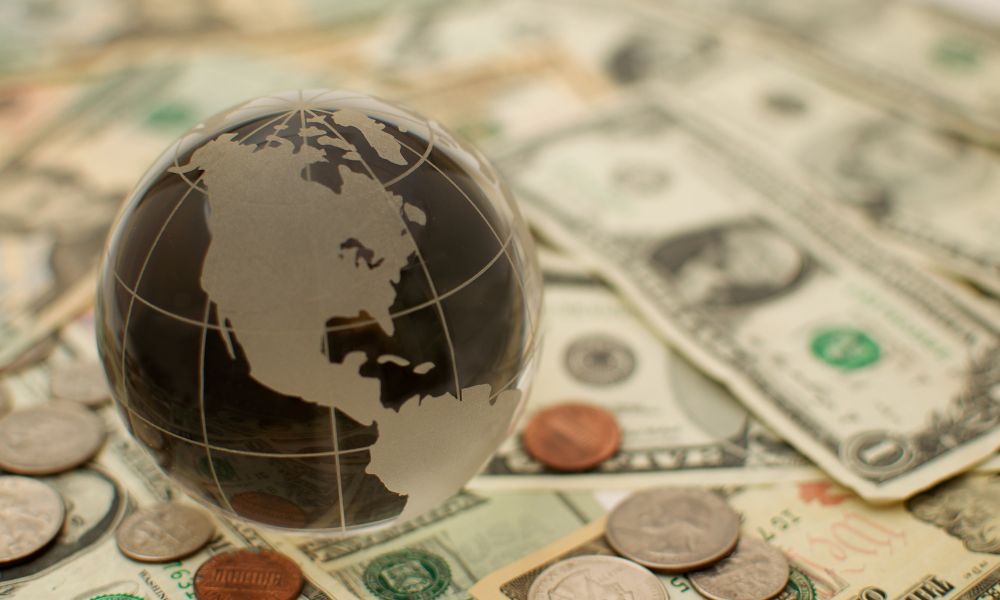
The US economy grew faster than expected in the second quarter as labour market resilience supported consumer spending, while businesses boosted investment in equipment, potentially keeping a much-feared recession at bay.
While the Department of Commerce’s advance second-quarter gross domestic product (GDP) report on Thursday sketched a picture of sustained strength in domestic demand, inflation subsided considerably last quarter.
| Are you a Tax Lawyer in USA? 👉Transform Your Brand: Click for Metamorphosis👈 |
That led some economists to believe that the Federal Reserve would not need to raise interest rates beyond this year, but rather keep borrowing costs higher for a while. The United States central bank on Wednesday raised its policy by 25 basis points to a 5.25 percent to 5.5 percent range.
“The economy is more than resilient, solid second-quarter growth shows it has triumphed over the naysayers saying recession was inevitable following the inflation shock and the Fed’s aggressive rates stance to stem it,” said Christopher Rupkey, chief economist at FWDBONDS in New York.
GDP increased at a 2.4 percent annualised rate last quarter. The economy grew at a 2 percent pace in the January-March quarter. Economists polled by Reuters had forecast GDP rising at a 1.8 percent rate in the April-June period.
The government’s measure of inflation in the economy, the price index for gross domestic purchases, increased at a 1.9 percent rate, slowing from the 3.8 percent pace logged in the first quarter. Excluding food and energy, prices rose at a 2.6 percent pace following a 4.2 percent rate of increase in the first quarter.
Outside the housing market and manufacturing, the economy has largely weathered the 525 basis points in rate hikes from the Fed since March 2022 as the central bank battles inflation.
Economists have, since late 2022, been forecasting a downturn, but with price pressures ebbing, some now believe the soft-landing scenario for the economy envisaged by the Fed is feasible.
Consumer spending, which accounts for more than two-thirds of US economic activity, increased at a 1.6 percent pace. Though the pace of growth slowed from the first quarter’s robust 4.2 percent rate, it was enough to add more than a full percentage point to GDP growth. While spending on long-lasting manufactured goods has slowed after booming during the COVID-19 pandemic, outlays on services are taking up some of the slack.
Spending is being propped up by excess savings accumulated during the pandemic, estimated by economists to be as much as $2.1 trillion at one point, debt and strong wage gains from the tight labour market as companies hoard workers after struggling to find labour during the pandemic.
Employment in the leisure and hospitality sector has remained below pre-pandemic levels.
The number of people receiving benefits after an initial week of aid, a proxy for hiring, dropped 59,000 to 1.69 million during the week ending July 15. Despite high-profile layoffs in the technology and finance sectors in 2022 and early this year, the so-called continuing claims remained low by historical standards.
This suggests that some laid-off workers are quickly finding employment. The continuing claims data covered the week that the government surveyed households for July’s unemployment rate.
Continuing claims fell between the June and July survey periods. Together with a Conference Board survey on Tuesday showing consumers upbeat about the labour market in July, the claims drop suggests the jobless rate likely eased this month. At 3.6 percent in June, the jobless rate was not too far from multi-decade lows.
US stocks opened higher. The dollar rose against a basket of currencies. US Treasury prices fell.
Business investment accelerated after almost stalling in the first quarter, thanks to a rebound in spending on equipment like aircraft and motor vehicles.
Efforts by President Joe Biden’s administration to bring semiconductor manufacturing back to the US have been boosting factory construction. Investment in nonresidential structures like factories remained robust last quarter, contributing to the economy’s resilience.
Government spending also contributed to GDP growth. There was also a boost from inventory investment, but trade was a drag after adding to growth for four straight quarters.
Residential investment, which includes homebuilding, contracted for the ninth straight quarter. A measure of domestic demand increased at a solid 2.3 percent rate after surging at a 3.2 percent pace in the first quarter.
But some economists have remained convinced that a recession is on the horizon, arguing that higher borrowing costs will eventually make it harder for consumers to fund their spending with debt.
They also noted that banks were tightening credit and excess savings accumulated during the pandemic continued to be run down. Slowing job growth was seen curbing wage gains. Source
| Are you a Tax Lawyer in USA? 👉Transform Your Brand: Click for Metamorphosis👈 |